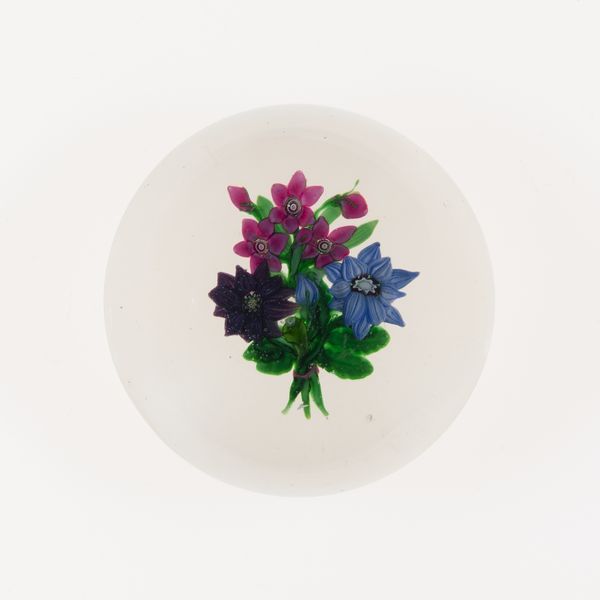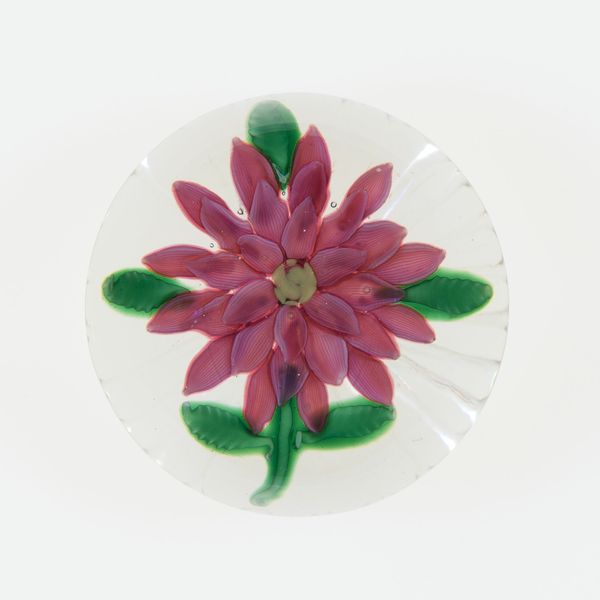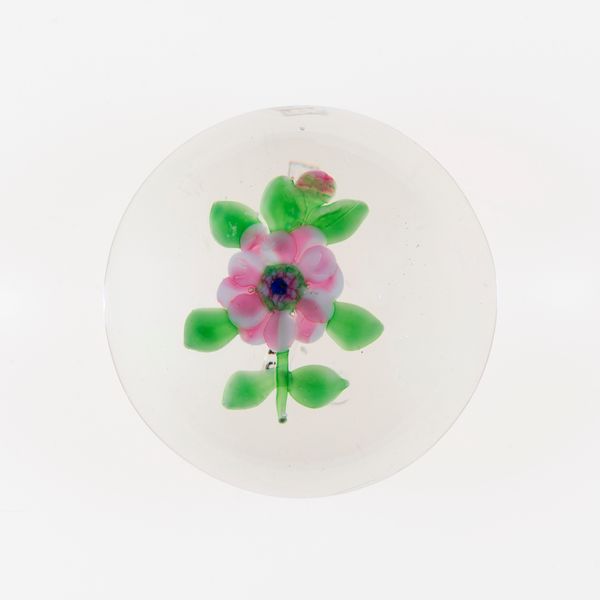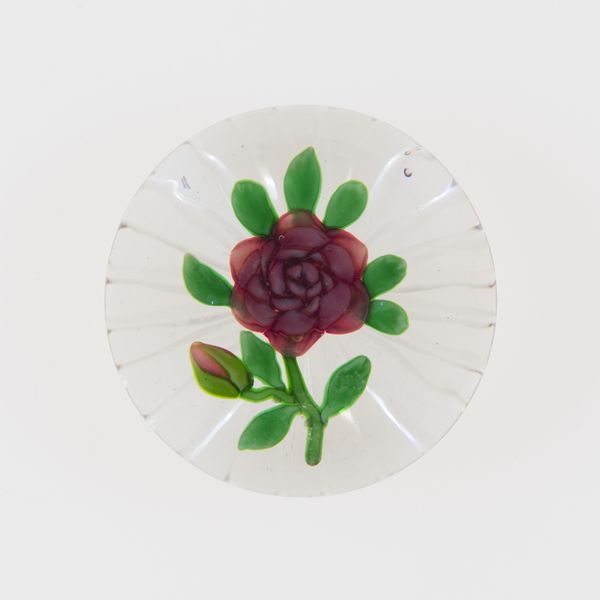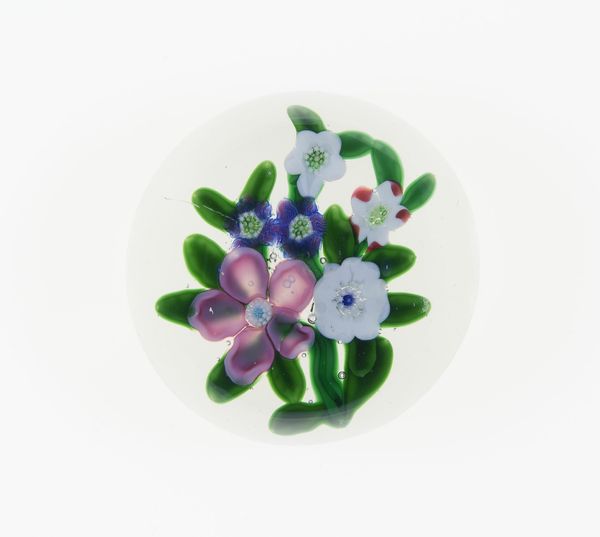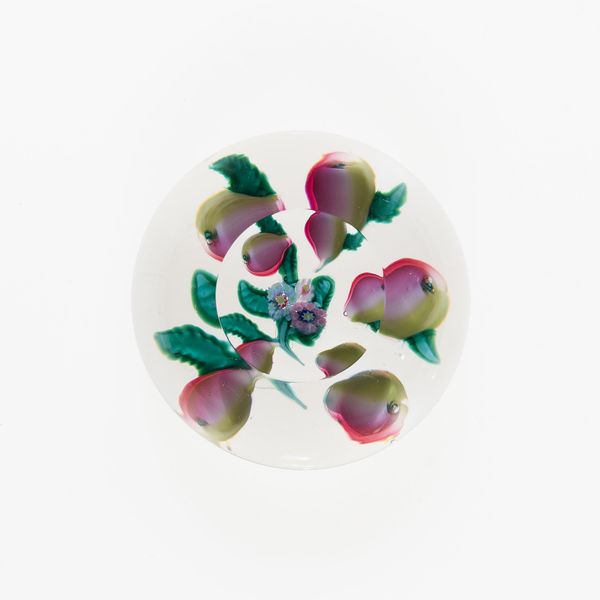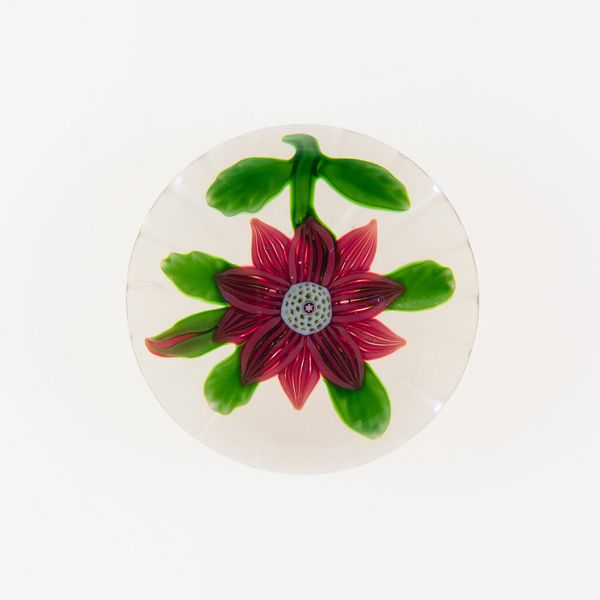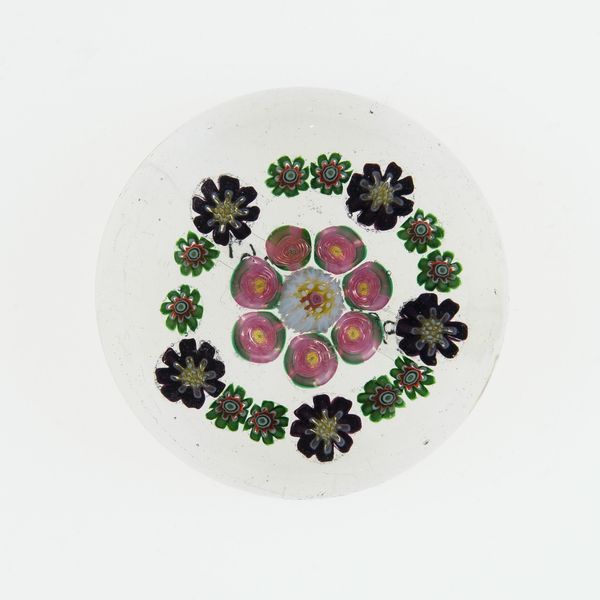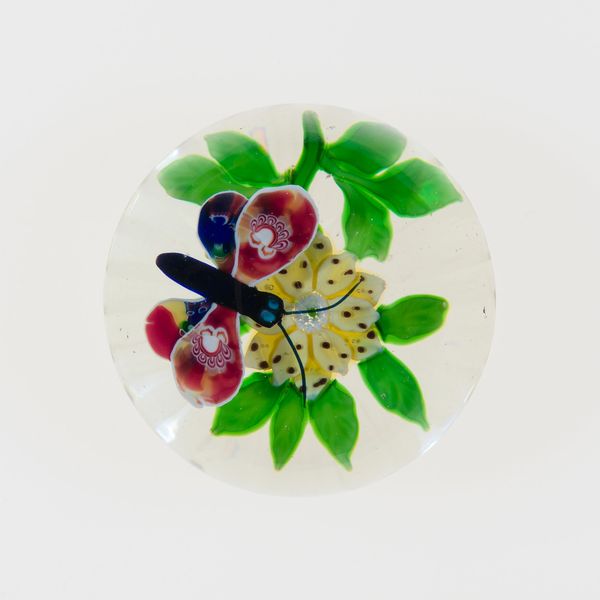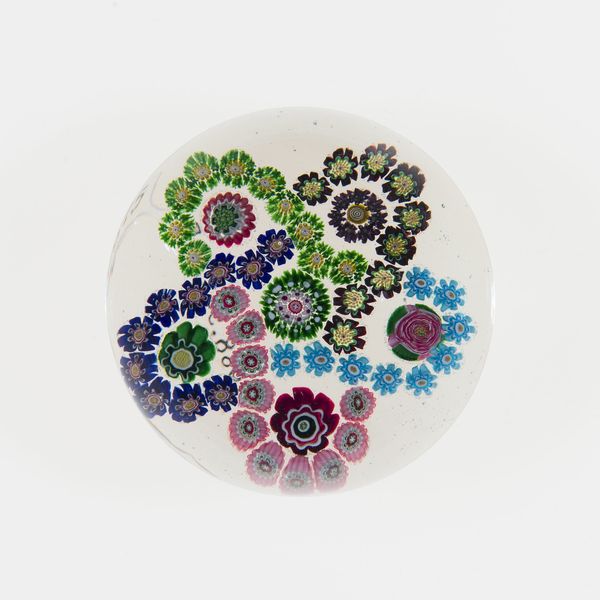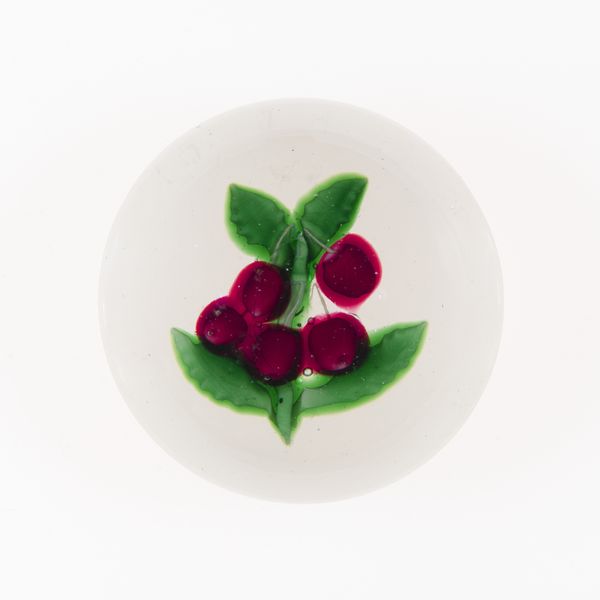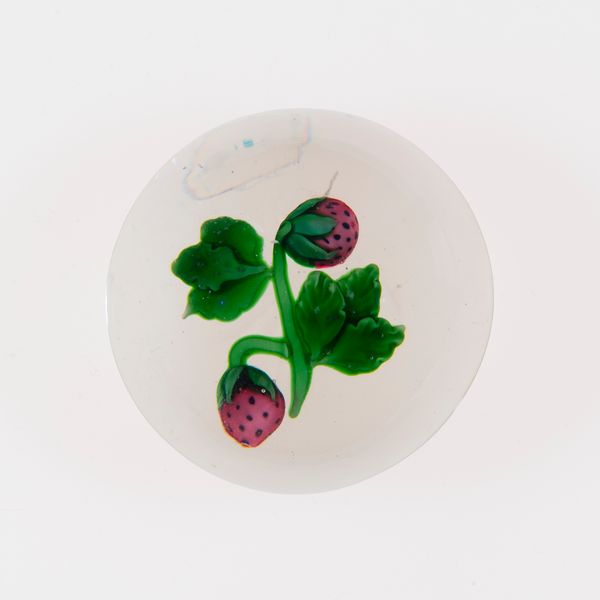
paper, glass
#
paper
#
glass
#
romanticism
Dimensions: Diam. 7.7 cm (3 1/16 in.)
Copyright: Public Domain
Curator: Welcome! Here we have an intriguing "Paperweight," crafted around the 19th century by the Clichy Glasshouse, currently residing here at the Art Institute of Chicago. It is a small romantic still-life encased in glass, with a paper backdrop. Editor: My initial reaction is that this piece possesses a contained tranquility. The glass encapsulates a miniature world, a meticulously arranged botanical scene. There’s something very precious about that deliberate composition. Curator: Indeed. Glass paperweights like this became extremely popular during the mid-19th century, reflecting broader interests in science, nature, and even early industrial production, allowing for a burgeoning middle class to enjoy beautifully handcrafted artworks such as this. Glasshouses like Clichy catered to that market. Editor: Looking closer, the interplay of colors is what holds my interest. The vibrant magenta flower is expertly contrasted by the vivid greens of the surrounding foliage. It's a fascinating study in controlled asymmetry, isn't it? Curator: Precisely, and glassmaking had significant advancements then, providing artisans greater flexibility and precision, particularly with the millefiori and lampwork techniques needed to create these complex floral arrangements. Each bloom and leaf signifies artisan expertise. Editor: You know, that tension between control and what feels like the untamed nature of the flower itself – it makes the entire object feel strangely alive, yet completely static. A bit like embalmed, yet so present, through its detail. Curator: Consider also, paperweights served a utilitarian purpose on the desk in that era, when handwriting was paramount and papers needed weighting down! Editor: It is tempting to get lost in its intricate construction of individual glass pieces and consider that. I admire how that flower in particular seems both realistically observed and subtly stylized. The textures, as captured in the glass, offer a captivating viewing experience. Curator: Paperweights also spoke to the power of industrialization to grant access to the trappings of wealth. Before then, only the richest citizens had the capacity to own this type of objet d’art, while factories such as Clichy created this and also established work practices for generations. Editor: I do wonder if we sometimes lose sight of the simple beauty in our search for contextual significance. Curator: I think the real beauty is when we view both at the same time! Hopefully, this exploration offers food for thought, as you navigate your museum visit. Editor: It's been fascinating to see the work through your eyes! A little burst of nature under glass, so nice to see it, thanks to you.
Comments
No comments
Be the first to comment and join the conversation on the ultimate creative platform.
